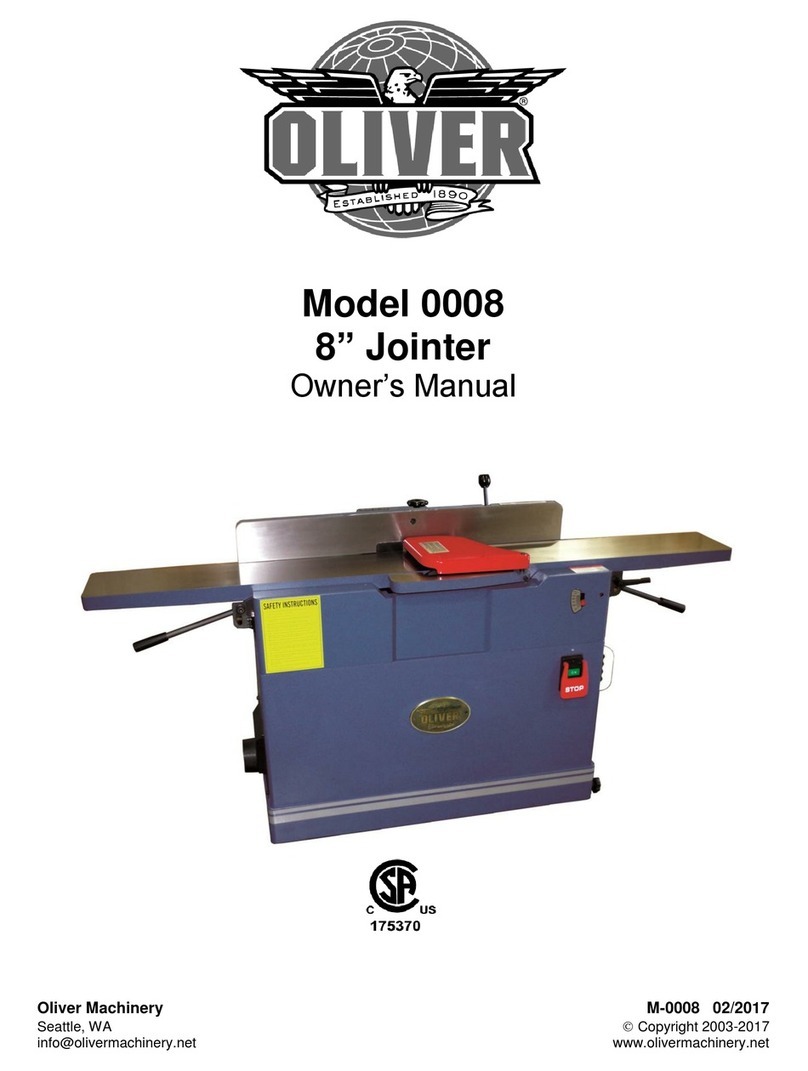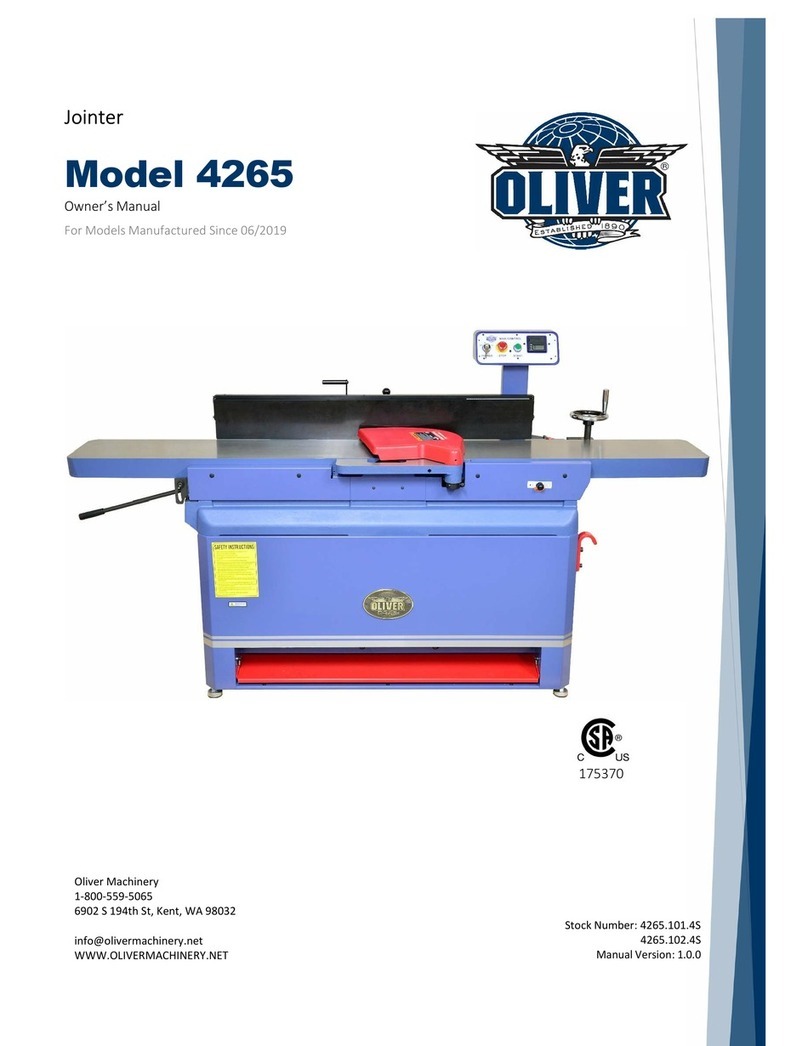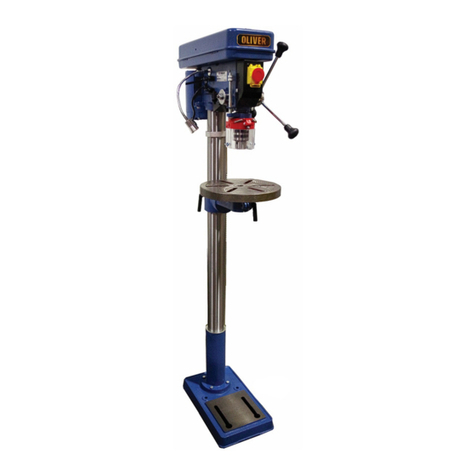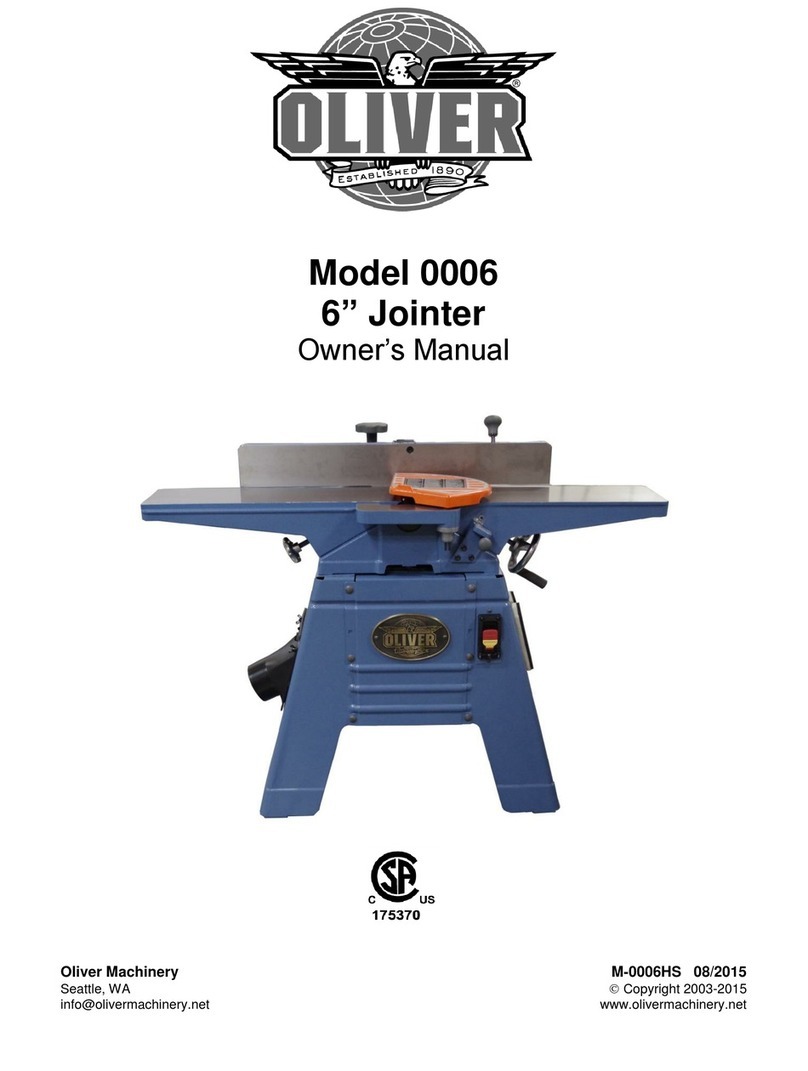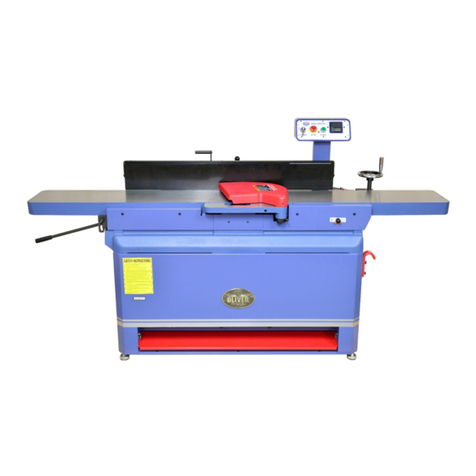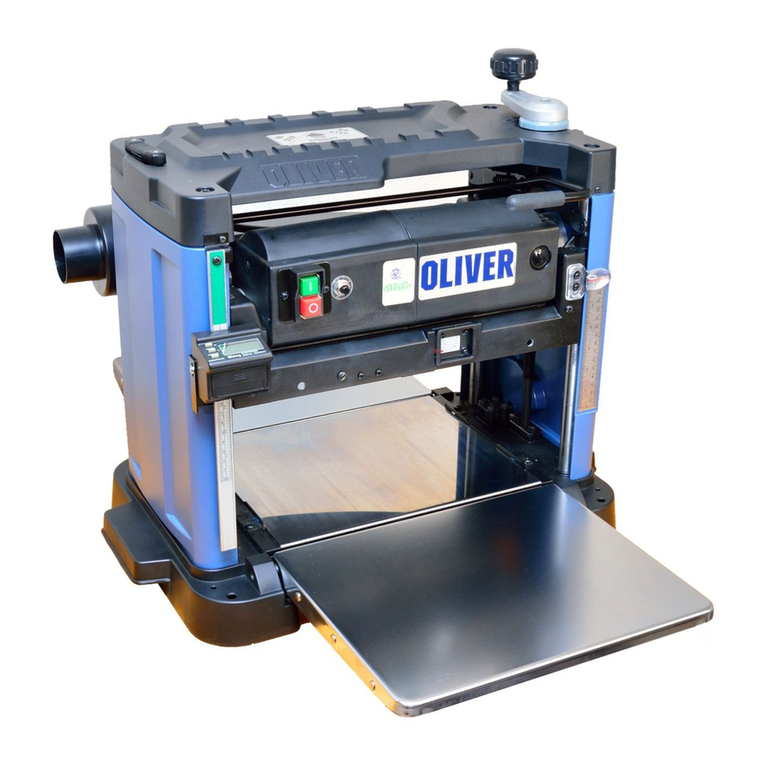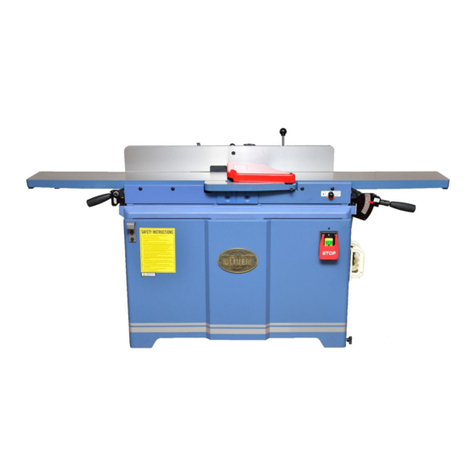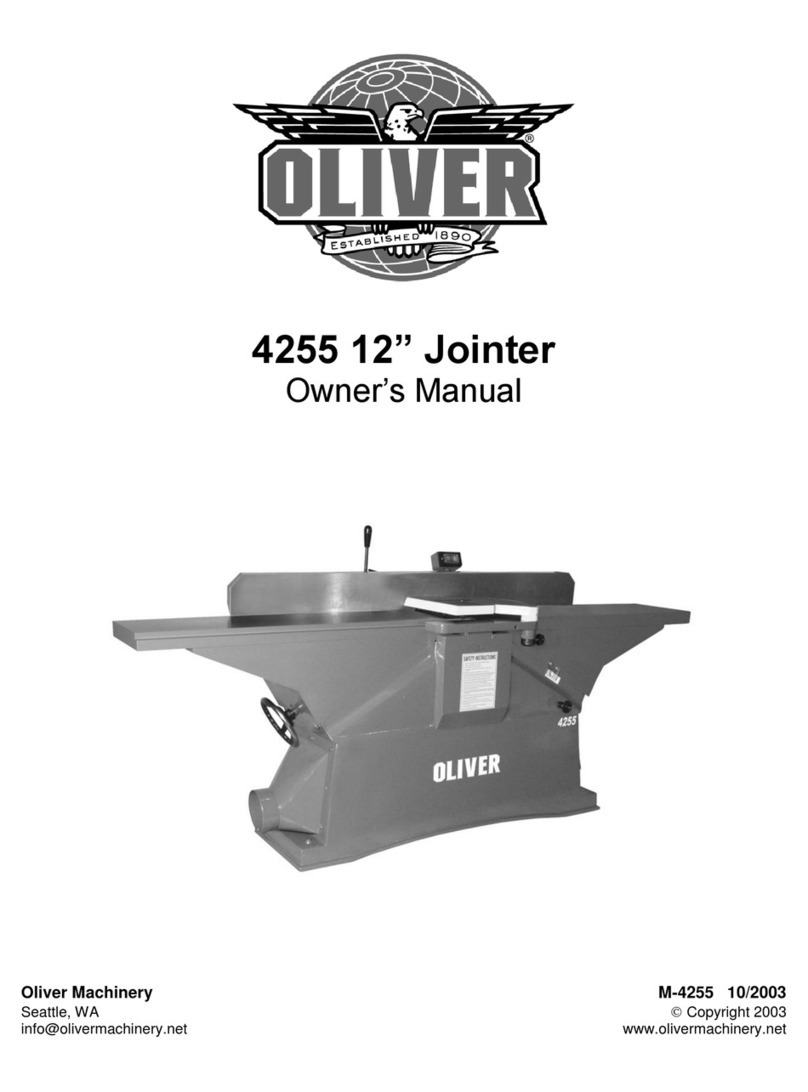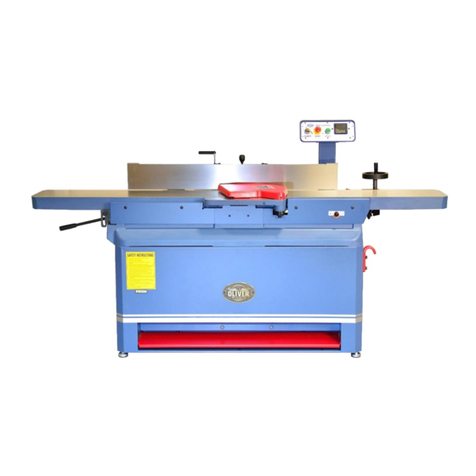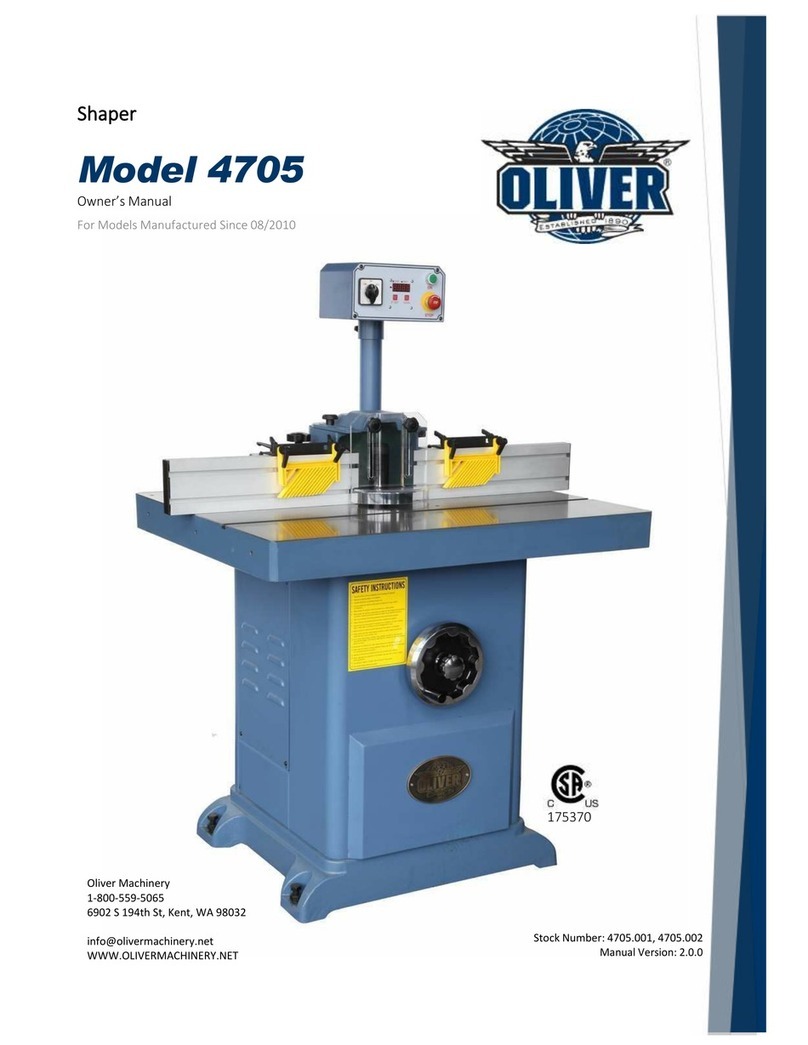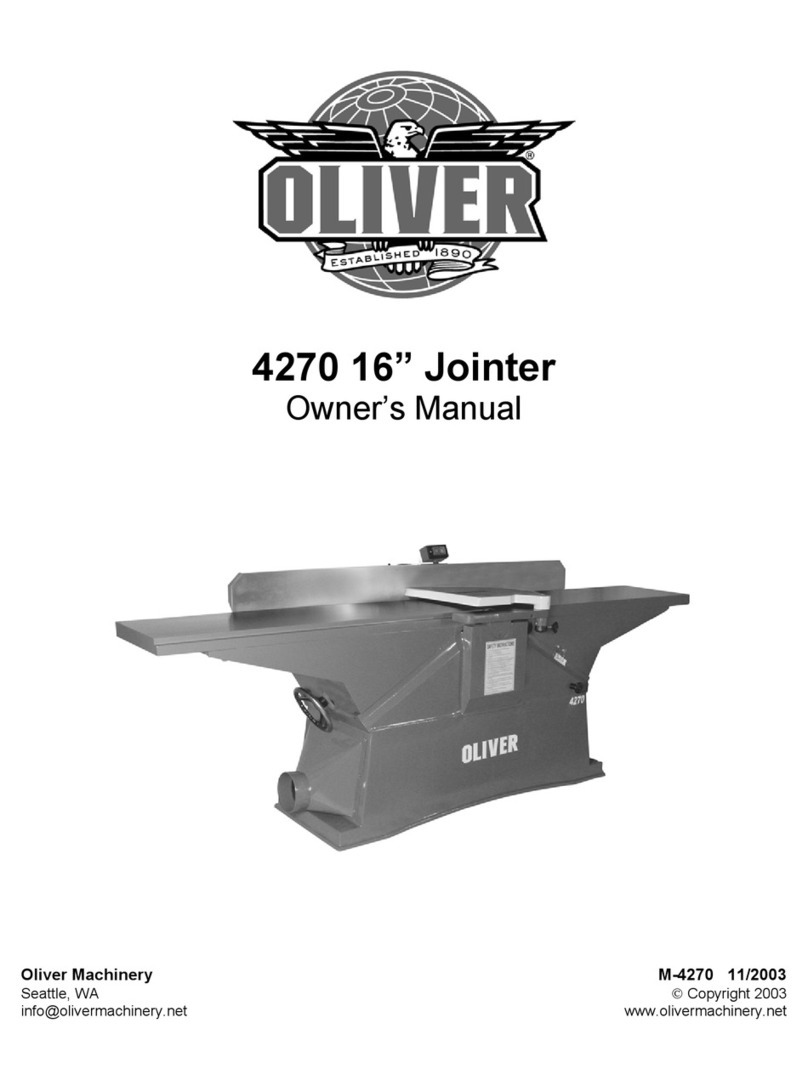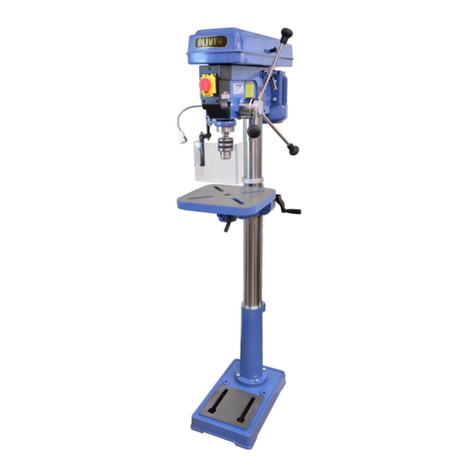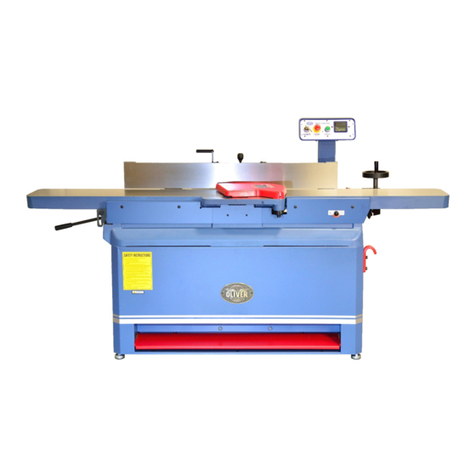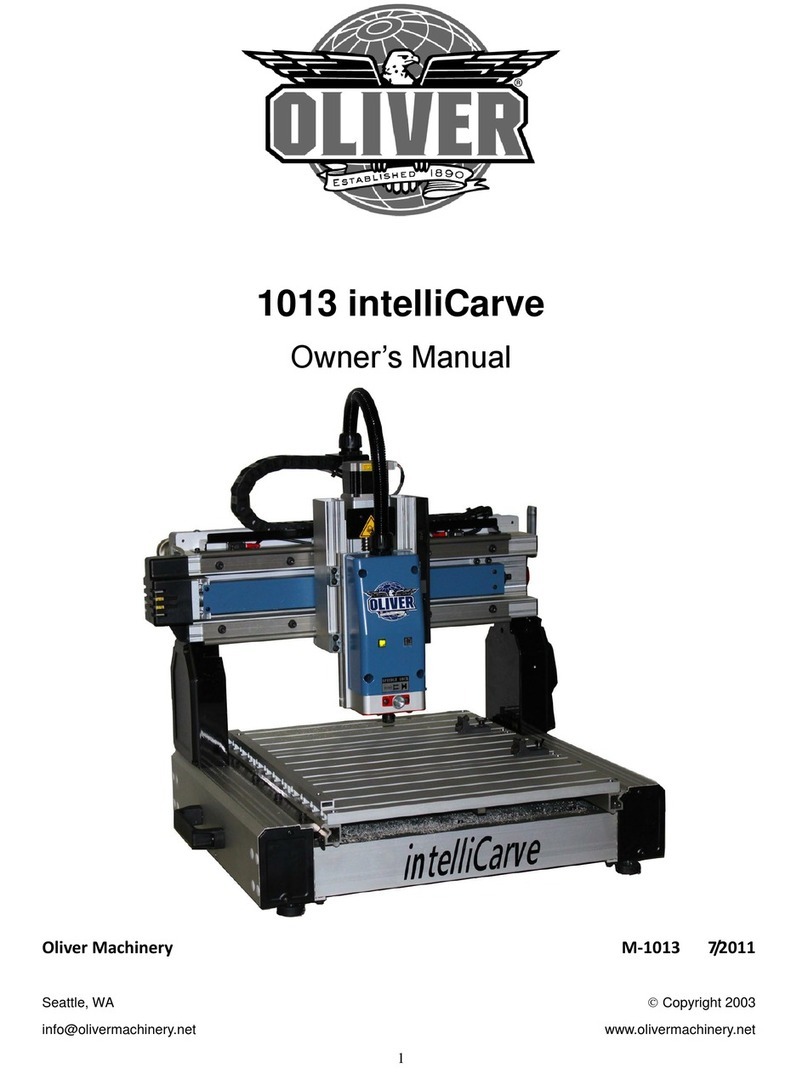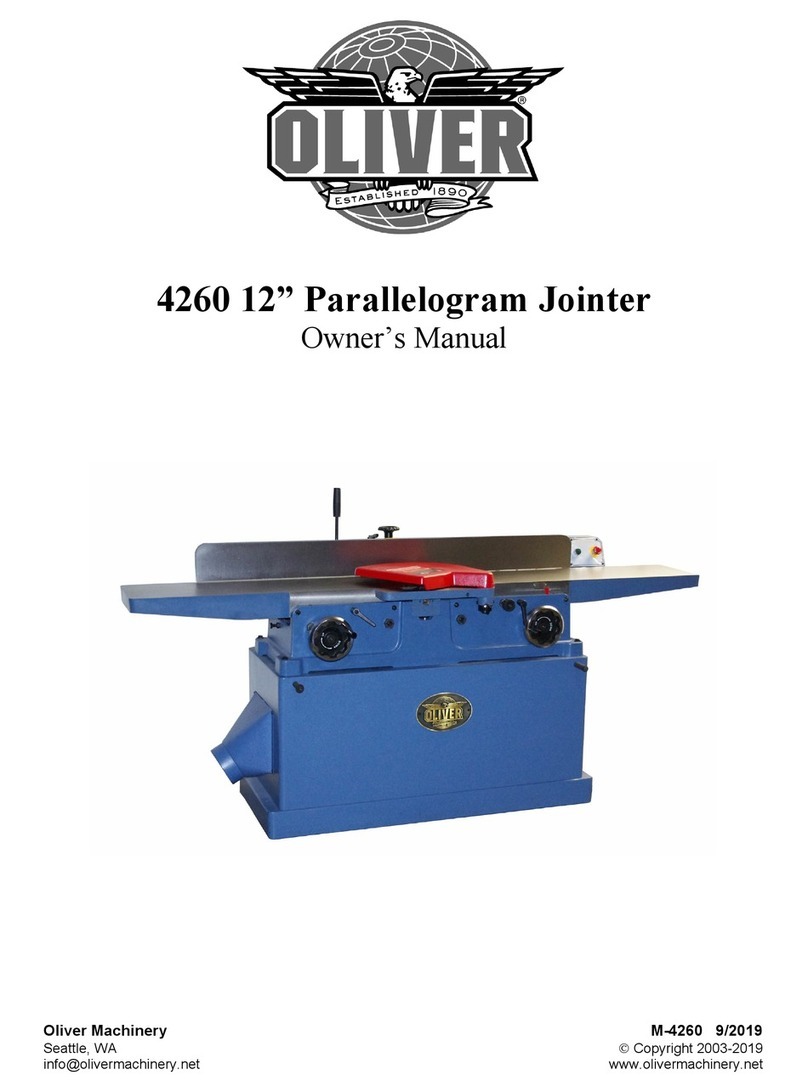
Table of Contents Page Nu ber
Warranty......................................................................................................................................................2
Warnings..................................................................................................................................................3-4
Table of Contents........................................................................................................................................5
Specifications...............................................................................................................................................5
Uncrating the Machine.................................................................................................................................6
Contents......................................................................................................................................................6
Machine Preparation and Setup............................................................................................................6-8
Control panel and magnetic starter..............................................................................................................7
V-Belts.........................................................................................................................................................7
Handwheels.................................................................................................................................................8
Dust Collection.............................................................................................................................................8
Electrical Connections.................................................................................................................................8
Blade guard.................................................................................................................................................8
Fence Operation........................................................................................................................................9
Fence Legend..............................................................................................................................................9
Adjustment of the 9 Degree Stop...............................................................................................................9
Fence Operation..........................................................................................................................................9
Knives.......................................................................................................................................................1
Knife Replacement.....................................................................................................................................1
Adjusting the Outfeed Table......................................................................................................................1
Operation..................................................................................................................................................11
Hand Safety and Placement......................................................................................................................11
Jointing......................................................................................................................................................11
Direction of the grain..................................................................................................................................11
Edging........................................................................................................................................................11
Facing........................................................................................................................................................12
Beveling.....................................................................................................................................................12
Rabbeting..................................................................................................................................................12
Adjusting the Infeed Table Height..............................................................................................................13
Maintenance.............................................................................................................................................13
V-Belts.......................................................................................................................................................13
Lubrication.................................................................................................................................................13
Knives........................................................................................................................................................13
Table Leveling...........................................................................................................................................13
Troubleshooting.......................................................................................................................................14
Specifications
Model No...............................................................................................................................................423
Motor...............................................................................................................................2HP, 1PH, 22 Volt
Full load amps...........................................................................................................................................12
Infeed Table Travel (in.)............................................................................................................................1/2
Cutterhead speed (RPM).......................................................................................................................55
Number of Knives......................................................................................................................................54
Rabbeting Capacity (in.)...........................................................................................................................1/2
Dust Port Diameter (in.)...............................................................................................................................4
Table Dimensions (L x W/in.)...................................................................................................74-7/8 x 9-1/4
Table Height (In.).................................................................................................................................3 -1/2
Fence Dimensions (L x H/in.)...............................................................................................................38 x 4
Fence Tilts (deg.)................................................................................................................................9 - 45
Positive Stops (deg.)......................................................................................................................9 and 45
Overall Dimensions....................................................................................................................75 x 25 x 4
Gross Weight (lbs.)..................................................................................................................................572
CFM...........................................................................................................44 CFM at 45 FPM air velocity
5

